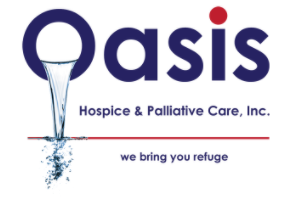Nutritional Change Support Services Chicago | Health & Nutrition Support Services
A good diet helps avoid chronic disease throughout the lifespan — and Oasis Hospice & Palliative Care Chicago physicians know it’s never too late to make changes to support healthy aging. Chronic disorders such as heart disease and cancer, as well as health issues connected to changes in muscle and bone mass, such as osteoporosis, are more common among older persons. The good news is that this demographic can reduce some of these risks by consuming nutritious foods and staying active.
When compared to younger adults, older persons have reduced calorie needs but equivalent or even higher nutritional needs. This is frequently due to decreased physical activity, changes in metabolism, or age-related bone and muscle mass loss. Chronic health issues, the use of various medications, and changes in body composition all have an impact on nutrient needs in this population. Following a healthy dietary pattern and making every bite count is therefore especially crucial for this age group. Contact our Oasis Hospice & Palliative Care community nurses and physicians at 773.941-4838 for more nutrition and health assistance, and support services.

Special Considerations for Senior Citizens
Based on the Dietary Guidelines policy for Americans, the Healthy Eating Index (HEI) assesses diet quality. Older persons had the highest diet quality as compared to other age groups, with an HEI score of 63 out of 100. While this is highly positive, there is still much space for growth in the community. Consuming more fruits and vegetables, whole grains, and dairy products enhance diet quality, as does limiting added sugars, saturated fat, and sodium. Support from health community experts, friends, and family can assist older persons in meeting food and nutrient recommendations.
Protein consumption helps to prevent the loss of lean muscle mass. However, older persons, particularly those aged 71 and up, frequently consume insufficient protein. Because most older individuals are eating enough meat, poultry, and eggs, it’s vital to remind them that fish, dairy, and fortified soy substitutes, as well as beans, peas, and lentils, are high in protein. These protein sources also contain minerals like calcium, vitamin D, vitamin B12, and fiber.
The ability to absorb vitamin B12 can deteriorate with age and the usage of certain medications. Health practitioners can assist elderly people to receive enough vitamin B12 by making sure they eat enough meals like breakfast cereal. Seniors should consult with their doctor about using dietary supplements to enhance their vitamin B12 intake.
Healthy Beverage Options for Seniors
Because the sensation of thirst diminishes with age, it can be difficult for older persons to consume enough fluids to stay hydrated. Drinking plenty of water is an excellent method to avoid dehydration and aid digestion – plus it adds no calories! Unsweetened fruit juices, low-fat or fat-free milk, and fortified soy drinks can also assist in meeting fluid and nutrient requirements. Drinking beverages with meals and throughout the day might be encouraged by health care practitioners.
If older individuals prefer to drink alcohol, they should do so in moderation — no more than two drinks per day for males and one drink per day for women. Remember that this generation may experience the effects of alcohol faster than they did when they were younger, thus increasing the risk of falls and other incidents.
Helping Older Adults Eat Healthily
Health experts, family, and friends can help older persons achieve a healthy food pattern that suits their budget, preferences, and traditions, just as they can at other periods of life. Other issues to consider while encouraging good eating in older individuals include:
- Food enjoyment – Sharing meals with friends and family can boost food enjoyment while also providing a terrific opportunity to share a lifetime of tales, all while improving dietary patterns.
- Ability to chew or swallow meals – Experimenting with new ways of preparing foods from all food groups can aid in the identification of textures that are acceptable, appealing, and pleasurable for older persons, particularly those who have difficulty chewing or swallowing. Good oral health is also essential for chewing meals.
- Food safety – It is very important for this age group to practice safe food handling. Because of a loss in immune system function, the risk of foodborne illness rises with age. On our Oasis company website, you may find further information on food safety for older persons and food safety for people with weakened immune systems.
Find Income Resources to Assist Older Adults in Eating Healthy
There are several government tools available to help health professionals assist older people in attaining and maintaining a healthy food pattern.
Congregate Nutrition Services –
offers meals in senior centers, schools, and churches for seniors aged 60 and up and their spouses.
Supplemental Nutrition Assistance Program (SNAP) –
The (Supplemental Nutrition Assistance Program) snap program income offers persons with low incomes with temporary benefits to aid and receive food snap benefits for food purchases. See the Illinois.gov website or contact a local food equity council to receive snap benefits now!
Commodity Supplemental Food Program (CSFP) –
Supplemental Food Program (CSFP) –
The US Department of Agriculture delivers monthly packages of healthful foods.
Home-Delivered Nutrition Services provides home-delivered meals to elderly persons who have difficulty leaving their homes or who have particular health issues.
The Child and Adult Care Food Program –
reimburses older adults enrolled in daycare facilities for nutritional meals and snacks.
Choosing healthy foods and actively using nutrition assistance program resources can help people of all ages make every mouthful count. Nutrition Programs for Seniors on our Oasis Hospice website has further policy information about these programs for older individuals.
Policy on Nutrition and Physical Activity | IPHI Support
As convener of the Illinois Alliance to Prevent Obesity, IPHI promotes food equity agenda policies and system improvements that promote equitable and just opportunities for Illinoisans to eat properly and engage in physical activity in order to improve their health and well-being.
Eligibility Requirements
Eligibility for these programs is nearly completely established by states and local governments. The single government eligibility criterion for participation is age; to participate in either the congregate or home-delivered Illinois nutrition programs, a person must be at least 60 years old.
Furthermore, Section 339 of the Older Americans Act policy broadens eligibility to include spouses (of any age) of older individuals, as well as the option for programs to provide meals to the following:
- Volunteers who provide assistance at dinner times
- People with disabilities who live in housing facilities that primarily house older adults and also offer congregate meal services
- Individuals with disabilities who live with eligible older adults
- Spouses (of any age) of adults above the age of 60
The OAA Nutrition Program’s Goal
Title III-C of the OAA authorizes nutrition services. The services are meant to support the overall health and well-being of older people by:
- Reduce elderly hunger, food insecurity, and malnutrition.
- Encourage older people to socialize.
Promote older people’s health and well-being by aiding them in gaining access to nutrition and other disease prevention and health promotion services in order to postpone the start of undesirable health disorders caused by poor nutritional health or sedentary behavior.
Services are not designed to reach every member of the community. Programs target individuals aged 60 and up who are in the greatest social and economic need, with special emphasis on the following groups.
- Seniors with low income
Minority senior citizens - Senior citizens in rural areas
- Senior citizens with limited English proficiency
- Seniors at risk of institutionalization
Approximately 5,000 suppliers distribute more than 900,000 meals per day in areas across the country.
The AoA, which administers the OAA, funds nutrition programs in part. They are also supported by:
- Foundations
- State and local governments
- Direct payment for services
- Fundraising,
- Voluntary donations (time and/or money) from program participants
- More sources
Health & Nutrition Assistance Program for Chicago Public Schools
For the past decade, Chicago Public Schools (CPS) and the Healthy Schools Campaign (HSC) have collaborated to change the district’s school lunch program. Students who eat healthier at school and at home had longer attention spans, better class involvement, and higher test scores, according to CPS and HSC. This is why CPS, HSC, and other partners have been collaborating to ensure that good change in Chicago school food is meaningful, sustainable, and in the best interests of the students whose health and learning it directly affects.
Parental perspectives are critical to our effort.
Parents learn the knowledge and skills needed to help bring about health-promoting changes at their children’s schools and maintain healthy eating habits at home through HSC’s Parents United for Healthy Schools program. Parents United has been at the forefront of making Chicago schools healthy places for their children since 2006. Parent leaders were critical in pushing the Breakfast in the Classroom program at both the school and district levels. Parents have also relentlessly advocated for healthier school diets and helped schools achieve the USDA’s HealthierUS School Challenge, which inspired the Healthy CPS School Indicator.
CPS and HSC piloted and released a series of School Food 101 workshops in 2013 to improve awareness of the new modifications to the school food program, boost understanding of school meal essentials, and learn how those changes are being implemented at the school level. We invited elementary school parents to poll their children about the school meals they were served. As a result of this research, CPS and HSC launched a complete school lunch survey for parents in the fall of 2014. The survey results showed that parents and school officials required more resources, information, and opportunities to submit their opinions. CPS and HSC collaborated to provide additional resources for school food with this requirement in mind.
Because principals and schools play such an important role in providing healthy food to students and educating them on healthy behaviors, we developed this toolkit in collaboration with Chicago Public Schools to provide you with a guide to ensuring the school meal program is working as well as it can for your students.
This toolkit contains ideas and tactics for creating a supportive school environment for the school food program and students’ attempts to eat properly.
The toolkit includes sections on:
- Promoting Healthy School Meals.
- Making it Work for Your School
- Improving the Dining Center
- Involving Others.

This toolkit is only the beginning; it will lead you to other resources and relationships that will help you improve the dining experience for all of your students.
Highlight Local Food Culture
CPS has pledged to provide students with more foods grown within 250 miles of Chicago. CPS specifies which menu items are local by adding an “L” next to them. Each monthly menu includes fresh frozen products sourced locally once a week, fresh unfrozen items sourced locally twice a month, and local chicken farmed without antibiotics twice a month.
A morning announcement advertising the local food item in the meal program is a terrific approach to getting students interested in school food. The morning school announcement can include information such as the farm’s name, the nutritional value of the item, and more.
For more information on health services, please enter our office or call 773.941.4838 and ask for the Nutritional Change Support Services In Chicago at OASIS HOSPICE & PALLIATIVE CARE. Our knowledgeable staff will help answer your questions and provide you with the information you require to get connected with care through email as well.

